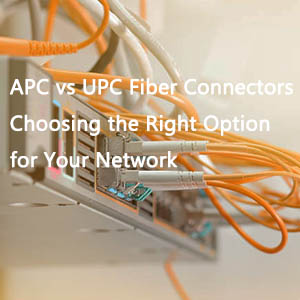In the field of optical fiber communication, improper light signal strength can adversely affect the transmission and reception of signals. Therefore, fiber optical attenuators play a crucial role in optical communication systems. So, what is an fiber optical attenuators? And what is its function?
I. Introduction to Fiber Optical Attenuators
fiber optical attenuators are devices used to regulate optical power, mainly used for measuring the performance indicators of optical fiber systems, attenuating signals in short-distance communication systems, and for system testing. They are very important passive devices in fiber optic communication, capable of attenuating optical signal energy as required by users. The attenuation range of fiber optical attenuators is typically between 0~65dB, while the attenuation power of common fixed fiber optical attenuators is between 1~30dB.
II. Classification of Fiber Optical Attenuators
- Based on the interface type, fiber optical attenuators can be divided into: SC Connectors, LC Connectors, FC Connectors, ST Connectors, etc. Each interface type has its corresponding fiber optical attenuators products.
- Other classifications include: inline optical attenuators, fixed optical fiber attenuators, and Y/Y Connectors fiber optical attenuators. Inline optical attenuators are known for their high precision, low additional loss, and stability; fixed fiber optical attenuators are favored for their low additional loss, high stability, and reliability; Y/Y type fiber optical attenuators are welcomed for their high-power light source, lightweight, compactness, and high precision.
III. The Function of Fiber Optical Attenuators
The main function of fiber optical attenuators is to regulate the strength of optical signals by introducing a certain loss during signal transmission to reduce the strength of optical signals to an appropriate power level. They are widely used in fields such as optical communication, optical sensing, and optical measurement, to balance the signal strength of different devices in the optical network, adjust the signal transmission distance, and reduce nonlinear distortion in optical fibers. In optical communication systems, fiber optical attenuators ensure the reliability and stability of signal transmission by reducing the power of optical signals to prevent saturation or overload of the optical receiver.
IV. Working Principle of Fiber Optical Attenuators
Optical fiber attenuators usually produce attenuation by absorbing light. Similar to how sunglasses absorb excess light energy, optical fiber attenuators have a working wavelength range that can absorb light energy. At this wavelength, it does not reflect light to avoid unnecessary back reflection in the optical fiber system. Different types of optical fiber attenuators use a certain length of high-loss optical fiber to reduce the power of the input optical signal, thus achieving an output signal power lower than the input signal power. They reduce optical power through mechanisms such as absorption, reflection, diffusion, scattering, deflection, diffraction, and dispersion of optical signals.
V. How to Choose the Right Fiber Optical Attenuators
- Attenuation: When selecting an fiber optical attenuators, consider the required attenuation. Different applications require different attenuation levels, typically ranging from a few decibels to several tens of decibels. Users should choose the appropriate attenuation level based on actual needs.
- Wavelength: The attenuation of fiber optical attenuators is closely related to wavelength, and the attenuation may vary for different wavelengths. Therefore, users need to select the appropriate optical fiber attenuator based on the wavelength range of the optical fiber transmission system used.
- Precision: When selecting an fiber optical attenuators, its attenuation precision should also be considered. The higher the precision of the attenuator, the more accurate the control of the attenuation level, which can better ensure the reliability and stability of the system. Generally, the precision of the attenuator should be within 1dB.
- Power Handling: The maximum power that an fiber optical attenuators can handle is also an important consideration. In optical communication systems, the optical power can be very high, and if the optical fiber attenuator cannot handle such power, it may fail or be damaged.
- Optical Interface Connectors: The interface type of the fiber optical attenuators is also a factor to consider. The interface type of the fiber optical attenuators should match the interface type of the optical fiber used, with common interface types including LC,SC, FC, ST, etc.
Fiber optic attenuators are essential tools for maintaining signal integrity in optical communication systems. They ensure that the signal power is neither too strong nor too weak, preserving data accuracy across various distances. By selecting the appropriate attenuator and applying it correctly, you can optimize your network’s performance, making it more efficient and reliable. Understanding their function and correct use is key to maintaining the health of any fiber optic network.











